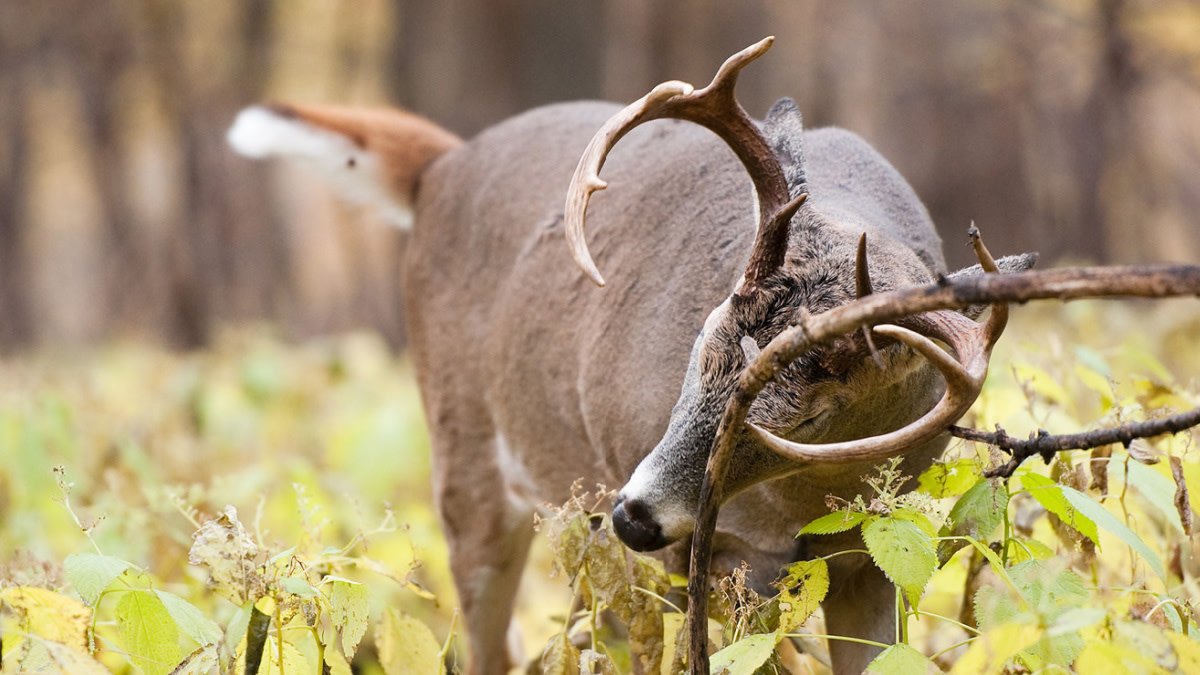
Most whitetail hunters have at some point inhaled the strong stench wafting from a rutting buck’s tarsal glands. While they may recognize it as the calling card of a mature deer, that’s about the extent of most folks' olfactory understanding.
However, for the sake of pursuing an animal that communicates primarily via odor, it’s important to study the full scope of their scent communication.
“They’re not a very vocal species, so they’re doing a lot of their talking with scents,” Jim Heffelfinger, Arizona Game and Fish Department wildlife science coordinator, told MeatEater.
A series of glands spread throughout a deer’s body aid them in scent communication. While many hunters might think of these glands as a single organ, some of the more well-known whitetail glands are actually concentrations of specialized microscopic sacs and their functions are more complex than we can fully realize.
“A lot of times, what we call glands aren’t these super well-defined things,” Heffelfinger said. “Some of these parts are just areas on the skin that have a high concentration of this glandular tissue.”
These glands don’t create scent themselves but serve as a vehicle for carrying it. They produce a waxy, oily substance that lubricates and waterproofs skin and hair.
Gland size, function, and even presence can vary between blacktail, whitetail, and mule deer. Here are the seven glands whitetail hunters should familiarize themselves with.
Tarsal Also known as "under tufts" or “tarsal brushes,” these glands are located on the inside of the back legs. The tarsal gland is critical to scent communication during the breeding season.
Bucks urinate on their tufts and rub them together during the rut, mixing the urine, gland secretions, and bacteria to create a pungent scent that signals they’re ready to breed. They can also flare the arrector pili muscle to disperse a burst of the pungent aroma.
Heffelfinger says tarsal glands can grow thicker with age, so “there’s a good possibility it’s providing scent information about the maturity and the dominance of that buck.”
Many hunters have been conditioned to remove tarsal glands before skinning a deer, but Heffelfinger says to leave them alone. This unnecessary step can spread bacteria and scent all over yourself and the meat.
Metatarsal Located on the opposite side of a deer’s hind leg is this gland researchers still know little about.
Because these glands present much smaller in whitetails living in warmer climates, some biologists believe they aid in body temperature regulation. Others suspect they’re used to mark bedding areas with a deer’s unique scent.
Interdigital If you’ve ever watched a deer walk past your stand and then spotted another following the exact same path hours later, you’ve witnessed the power of the interdigital gland. Positioned between the hooves on each foot, interdigital glands can deposit a larger amount of scent when a whitetail is spooked and stomps its foot.
Prepupital The prepupital gland is located inside a buck’s penile sheath. It may contribute to a whitetail’s individual scent and communicate dominance, but biologists still don’t know the exact role of this gland.
Preorbital Positioned by the front corner of the eye, the preorbital gland can produce yellow, waxy secretions. Bucks and does rub this gland on overhanging limbs above scrapes to leave some type of scent, although Heffelfinger says biologists are unsure what information it conveys.
Nasal While a gland inside the nostrils would seem important to an animal that relies on scent communication, Heffelfinger says the nasal gland likely does little more than lubricate the nasal passages and does not play a role in producing scent.
Forehead With a significantly higher concentration of skin glands than any other part of a whitetail’s body, the forehead can transfer deer scent to a rub or licking branch. Forehead glands are present in both bucks and does beneath the hair follicles.
Most active in the breeding season and most productive in mature bucks, these glands probably communicate age and dominance to does and young bucks. Their increased activity during this short period causes the dark coloring on a rutting buck’s forehead.
Making Scents of It All “There’s all kinds of things going on in the scent world that we don’t understand,” Heffelfinger said. While he admits we’ll probably never fully comprehend the capabilities of these mysterious mechanisms, Heffelfinger advises hunters to pay a lot of attention to body odor, play the wind, and cautiously apply deer lure tactics.
Although attractants truly based on real deer scent might make deer curious enough to stop and investigate, Heffelfinger says hunters should be wary of spending money on marketing that’s masked as science.
To hear Jim Heffelfinger talk more about deer biology, tune into episode 307 of The MeatEater Podcast.
Feature image via Matt Hansen.






